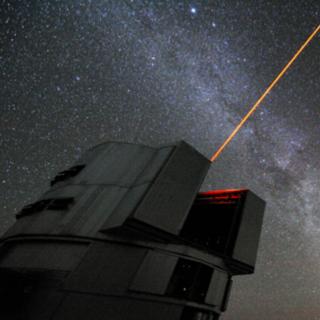Bibcode
de La Vernhe, Isaure González Rivera; Hill, Vanessa; Kordopatis, Georges; Gran, Felipe; Fernández-Alvar, Emma; Ardern-Arentsen, Anke; Thomas, Guillaume F.; Sestito, Federico; Navarrete, Camila; Martin, Nicolas F.; Starkenburg, Else; Viswanathan, Akshara; Battaglia, Giuseppina; Venn, Kim A.; Vitali, Sara
Bibliographical reference
Astronomy and Astrophysics
Advertised on:
12
2024
Journal
Citations
0
Refereed citations
0
Description
Context. Metal-poor stars hold key information on the early Milky Way. Through the identification and characterisation of substructures, one can understand internal mechanisms (including merger and accretion events), which are indispensable to reconstruct the formation history of the Galaxy. Aims. To allow an investigation of a population of very metal-poor stars ([Fe/H] < –1.7) with disc-like orbits (planar and prograde), high angular momenta (Lz/Jtot > 0.5) and rotational velocities (Vϕ > 180 km.s‑1) proposed in the literature, we used a sample of ∼3 M giant stars with Gaia DR3 BP/RP information and Pristine-Gaia metallicities down to –4.0 dex that we aimed to decontaminate. To achieve this, we constructed a sample as free as possible from spurious photometric estimates, an issue commonly encountered for high Vϕ metal-poor stars. Methods. We created a statistically robust sample of ∼36 000 Pristine-Gaia very metal-poor ([Fe/H] < –1.7) giant stars, using APOGEE and LAMOST data (adding GALAH and GSP-spec for verification) to estimate and remove contamination. We investigated the spatial and kinematic properties of the decontaminated sample, making use of Vϕ as well as the action space, which are both powerful tools to disentangle stellar populations. Results. The global distribution of very metal-poor stars in our sample shows the typical kinematics, orbital properties, and spatial distributions of a halo; however, as in previous works, we found a pronounced asymmetry in the Lz and Vϕ distributions, in favour of prograde stars. We showed that this excess is predominantly due to prograde-planar stars (10% of the very metal-poor population), which can be detected down to [Fe/H] = –2.9 at a 2σ confidence level. This prograde-planar population contains stars with Vϕ > 180 km.s‑1 and Zmax < 1.5 kpc. While the overall orbital configurations (Zmax ‑ Rmax or action space distributions) of our sample match that of a halo, the highly prograde and planar subset (2% of the very metal-poor population) also bears characteristics classically associated with a thick disc: (i) a spatial distribution compatible with a short-scaled thick disc, (ii) a Zmax ‑ Rmax distribution similar to the one expected from the thick disc prediction of the Gaia Universe Model Snapshot, and (iii) a challenge to erase its signature assuming a stationary or prograde halo with V¯ϕ∼30‑40 km.s‑1. Altogether, these results seem to rule out that these highly prograde and planar stars are part of a thin disc population and, instead, support a contribution from a metal-weak thick disc. Higher resolution spectra are needed to fully disentangle the origin(s) of the population.
Related projects

Galaxy Evolution in the Local Group
Galaxy formation and evolution is a fundamental Astrophysical problem. Its study requires “travelling back in time”, for which there are two complementary approaches. One is to analyse galaxy properties as a function of red-shift. Our team focuses on the other approach, called “Galactic Archaeology”. It is based on the determination of galaxy
Emma
Fernández Alvar